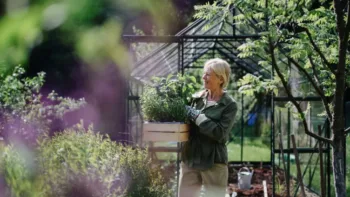
Do you dream of stepping into your backyard and plucking juicy tomatoes, crisp lettuce, or fragrant herbs for your dinner tonight? If so, you’re not alone. Home gardening has become a popular trend, and for good reason.
In this article, we’ll explore the numerous benefits of creating a home garden and provide you with some how-to’s to get started on your green thumb journey.
The Benefits of Home Gardening
Fresh and Flavorful Produce: When you grow your own fruits and vegetables, you have immediate access to the freshest produce possible. The flavors of homegrown tomatoes, cucumbers, and strawberries are simply unparalleled.
Cost-Efficient: Home gardening can save you money in the long run. Once you’ve invested in the necessary tools and seeds or seedlings, you’ll have a continuous supply of fresh produce at your fingertips, reducing your grocery bills.
Improved Health: Gardening is not only good for your wallet but also for your well-being. Spending time outdoors, getting physical exercise, and nurturing plants can reduce stress levels and increase your overall happiness.
Environmental Impact: By growing your own food, you can reduce your carbon footprint. There’s no need for long transportation and excessive packaging when your produce comes straight from your backyard.
Educational Opportunity: Gardening offers a hands-on learning experience. It’s an excellent way to teach children about biology, botany, and the importance of sustainability.
Getting Started with Home Gardening
Now that you’re aware of some of the benefits, let’s delve into a few how-to’s of creating a home garden:
- Select the Right Location: Choose a spot in your yard that receives adequate sunlight. Most vegetables and herbs require at least 6-8 hours of direct sunlight per day. Make sure the area has good drainage as well.
- Gather Essential Tools: You don’t need a vast array of tools, but some basics include a trowel, pruners, watering can or hose, and gloves to protect your hands.
- Decide What to Plant: Consider your climate and the space available. Start with easy-to-grow plants like tomatoes, basil, or lettuce if you’re a beginner. As you gain confidence, you can expand your garden to include more varieties.
- Prepare the Soil: Test your soil to determine its pH level and nutrient content. Most plants thrive in slightly acidic soil. You may need to amend your soil with compost or other organic matter to improve its quality.
- Plant and Care for Your Garden: Follow the planting instructions on your seed packets or plant labels. Water your garden regularly, and pay attention to any signs of pests or diseases. Early detection and intervention can save your crops.
- Harvest with Care: As your plants grow, harvest ripe produce regularly. This not only ensures the best flavor but also encourages more growth.
- Continual Learning: Gardening is a continuous learning process. Stay open to experimenting with new plants and techniques. Join a gardening club or consult gardening resources for tips and advice.
- Sustainability Practices: Implement sustainable practices like composting, using organic fertilizers, and minimizing pesticide use to promote a healthy and eco-friendly garden.
- Enjoy the Fruits of Your Labor: Invite friends and family over for meals featuring your homegrown ingredients. There’s nothing quite like the satisfaction of sharing a meal that you’ve cultivated with your own two hands.
In conclusion, creating a home garden can be a rewarding and environmentally responsible pursuit. Not only can you enjoy the freshest produce, but you can also benefit from improved well-being and the joy of nurturing life.
With these easy-to-follow steps, you can start your own garden adventure and reap the bountiful rewards it offers. So, roll up your sleeves, grab your gardening tools, and let the gardening journey begin!
By Admin –